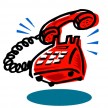Rules For Writing Professional Emails
 Sending Professional Emails
Sending Professional Emails
I recently took a course to learn more about the business email etiquette. My reasons for the class were mostly to improve my bad emailing habits by learning the rules for writing professional emails.
Yes, there is such a thing as email etiquette…..
It is amazing to me that many contractors and business people in general have not realized how important their email communications are. In my opinion if you are in business for yourself or work for a business that requires you to communicate via email, you need to be aware of proper etiquette.
As a carpenter my main communication with customers, off the job site, is through email. In order for me to keep a competitive edge it is for me important to communicate effectively, efficiently and professionally.
The old saying, “You only have one chance to make that first impression,” holds true here. If you want to impress people and build positive business relationships, pay attention to your e-mail.
When it comes to business, regardless of mode of communication used, professionalism and courtesy are always noticed as well as appreciated and will eventually pay off in dividends for your business. Here are a few important email etiquette rules:
Rules For Writing Professional Emails:
1. Subject Line:
Never omit the subject line. In fact the stronger or more compelling the subject line the better. Given the huge volume of e-mail that each person receives, the subject header is super important if you want your message read any time soon. The goal is to get your email recipient to WANT to open your email.
2. Over Using The Reply function:
Label each message for what it is. “Don’t just hit “reply” every time, you reply to a message, it gives the perception that you are lazy. Adding more details to the Subject line will allow the email recipient to find a specific document in his/her message folder without having to search every one you sent.
If you are writing about a totally different topic – start with a new message.
3 Remember The Greeting:
E-mail is informal but it still needs a greeting. Begin your emails by using the person’s name. A greeting line “Hi Steve” or “Dear Mr. Jones” is preferred. Failure to put in the person’s name can make you and your e-mail seem impersonal, rushed or cold.
4. Emails Lack Tone: They Are Often Misinterpreted:
When you communicate with another person face to face, 93% of the message is non-verbal. That means your words have less meaning. Since email has no body language your email recipient can not read your body language and so chose your words carefully and thoughtfully.
Avoid sarcasm and irony.
5. Be Brief:
Write to inform: stay focused, give accurate information and try to answer stay on topic. People skim emails so if you find yourself long-winded or have an extremely difficult explanation to give ~ pick up the phone and call.
6. Spell check:
Proof, Proof, and Proof again. Use proper capitalization and punctuation, and always check your spelling. Remember that your spellchecker will catch misspelled words, but not misused ones.
7. Avoid forwarding E-Mail Without Permission:
Do not forward anything that was sent just to you. Avoid forwarding anything with racist, sexist, off color, or anything that may offend someone. Sending non-business related e-mails, jokes, forwards or chain letters reflects on your lack of professionalism. Be professional.
8. Answer All Of The Questions:
Unless you enjoy volleying emails back and forth take the time to answer all of the questions in your email response. Offering a date and time for a meeting is always better than going back and forth. Use bullets, indents and white space to display your information and make it easier to read.
9. Use An Email Signature:
Always close your emails with your name. Adding contact information such as your phone, fax and street address if also very useful and proper in the business world. Create a formal signature is the most professional approach. Limit your signature to your name, Web site link, company name, and slogan/offer or phone number. Make sure your signature complies with and is approved by your boss or company.
10. When NOT To Send An Email:
Treat your emails as if they would be published on the front page of a Newspaper. If you’re not comfortable with that then don’t send the email.
11. Respond Promptly:
This is a customer service issue that should not be underestimated and is the same as a phone call. By not responding promptly you appear unorganized, and risk being out classed by your competition. If you do not have time to respond properly to an email at least respond telling the person you are in receipt of their request and you will reply on a specific date.
12. Using the Bcc: field:
A “Blind Courtesy Copy” is used for emails with groups of people that do not know each other and should not see each others emails. It’s for privacy.
13. Using the cc: Field:
When multiple people are involved in a project or discussion and you want them to all be on the same page, send them a courtesy copy. They should not respond.
Remember to address the “To:” field with the person with whom you are communicating with, asking to do something, or answering their question.
Sending Profesional Emails – Video Tips
RELATED POSTS:
1. 3 Tips For Growing Your Business
2. 3 Referral Tips For Growing a Business
3. Business 101 – Returning Phone Calls
4. Customers Won’t Tell You Unless you Ask









